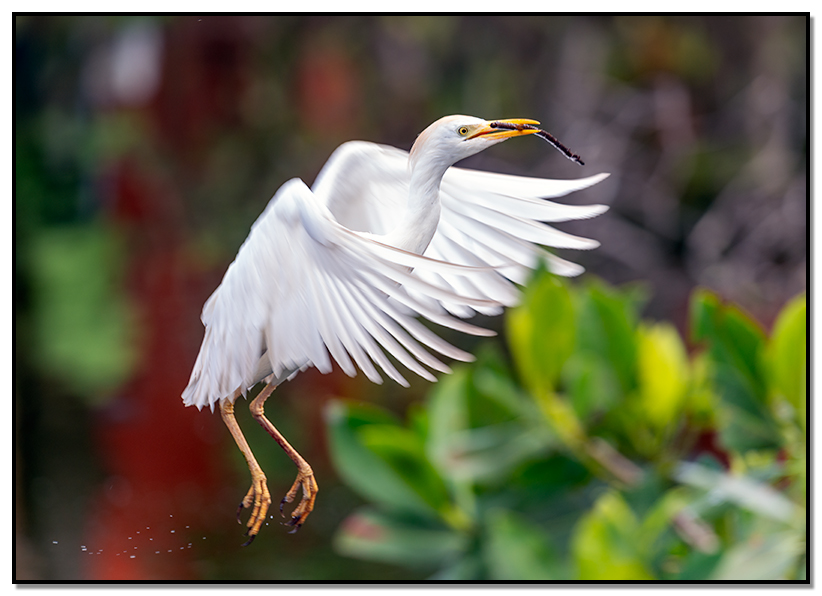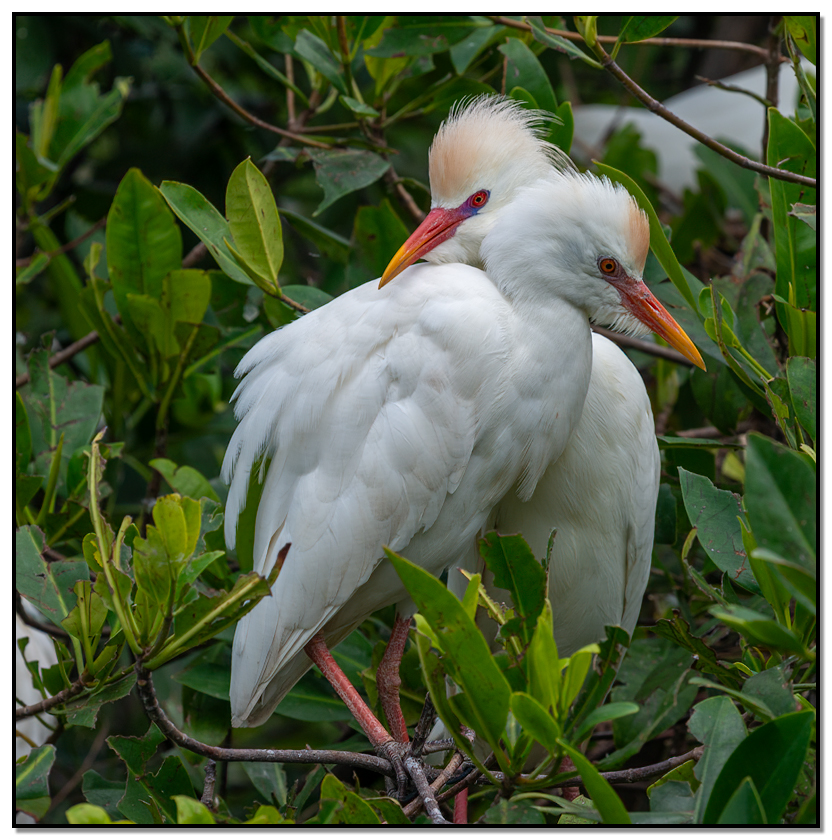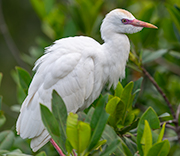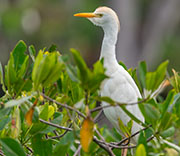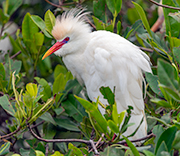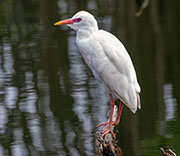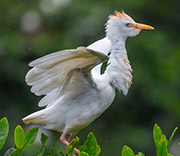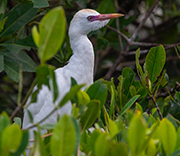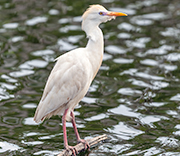Cattle Egret (Bubulcus ibis)
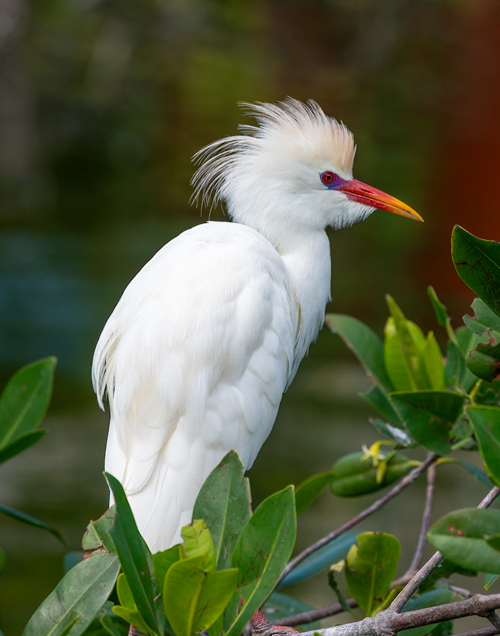
- HABITAT - Originally native to parts of Africa and Asia, Cattle Egrets have spread worldwide and are found on every continent except Antarctica. They are particularly common in tropical and subtropical regions. They thrive in open grasslands, agricultural fields, and wetlands, often seen near livestock or large animals. Cattle Egrets are colonial nesters, often nesting in large groups with other heron species. Their nests are constructed of sticks and are typically placed in trees, shrubs, or even reeds near water..
- DIET - They are opportunistic feeders, primarily eating insects, such as grasshoppers, crickets, and flies, that are stirred up by grazing animals. They also eat frogs, small reptiles, and other invertebrates.
- FACTS - The Cattle Egret has expanded its range significantly over the last century, often credited to its adaptability and the expansion of agricultural lands. It naturally colonized the Americas in the late 19th and early 20th centuries.
- Their name comes from their habit of following cattle and other large animals to feed on insects disturbed by their movement. This relationship benefits the birds by providing easy access to food and may help the animals by reducing pest populations.
